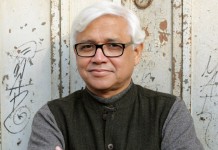STEM stands for Science, Technology, Engineering and Mathematics. STEM education is a modern approach that is designed to bring a revolution in the teaching and learning of these core subjects. Each of the fields of science, technology, engineering and mathematics is interrelated in real world and practical contexts.
With the world dynamics changing and global boundaries shrinking, traditional systems are rapidly changing to adopt new ways in tune with the times. The education sector is undergoing a transformation too. Children of today will lead the world tomorrow. The roots of thoughts and collateral thinking need to be implanted deep in their minds. This is best done in the early stages of learning – the formative years in school and college education. Traditional methods have always looked at teaching and learning the core subjects like maths, science or even social sciences with an isolated approach. A new revolutionary teaching methodology called the STEM education is gaining prominence. This is a trans-disciplinary method of learning, which integrates all the core subjects together.
Understanding STEM Education
STEM stands for Science, Technology, Engineering and Mathematics. STEM education is a modern approach that is designed to bring a revolution in the teaching and learning of these core subjects. Each of the fields of science, technology, engineering and mathematics is interrelated in real world and practical contexts. A STEM education inspired curriculum gives rise to exploratory learning and a problemsolving approach that in turn churns out future innovators, creators, critical thinkers, scientists and collaborators. A student’s take on learning takes an entirely different level of understanding when done with an integrated approach. It increases their exposure far beyond the textbooks, involves them in productive collaboration and brings them closer to the real world.
STEM education is also very important because students get to learn in a systematic and logical manner, the basic foundation of each subject, their interdependence and be future ready. It encourages them to find multiple right answers and solutions to a problem, which may also teach them that failure is a part of learning and life as well. For any change to be successful, a conceptdriven format has to be implemented at the grass root level. Same is the case with STEM education.
STEM Education in India
Educators, curriculum planners, academicians and employers across the world have realized that STEM education is the necessity of the hour. But, how does this fare in the Indian context? Is our education system ready to accept this approach? Can creativity and innovation score over marks and rote learning?
According to Census 2011 data, India has the largest student body in the world at 315 million. Still, the educated youth when they enter the real world are not wellequipped with the requisite skills to meet the demands of the corporate world. The reasons could be many, such as lack of academic infrastructure, innovative and interactive course methodology, qualified teachers, and more importantly an education system that values marks over creativity, research and innovation.
The number of Indian students opting for research and development has fallen drastically over the years; in fact, not even 1% of students pursuing higher studies choose research-oriented courses. Also, the lack of recognition of research conducted by many promising students (both at the school level and college level), in India, drives this young talent to look for opportunities on foreign shores. This, of course makes India vulnerable to a talent drain in the future. A significant solution to tackle this crisis is to implement a very comprehensive STEM integrated curriculum in the school and college classrooms. The curiosity of students has to be nurtured, encouraged and importance should be given to a learning approach that fosters creativity, innovation and research. STEM aims to lessen the gap between contextual and rote based learning, and replace it with a practical approach, which will equip the children with the skills and knowledge needed to get lucrative opportunities in their fields of interest.
This of course needs to be further augmented by facilitating partnership between individuals, corporates and educational institutions to create special programmes for educational and research projects. For instance, private foundations in the US such as Howard Hughes Medical Institute, Burroughs Wellcome Fund (BWF) and Intel Education Resources have taken great initiatives to support the education and research programmes in their country. Some institutes in India are doing their bit in promoting STEM education as well. Last year, the Academy of India announced that it will open one hundred STEM schools over the next ten years across different cities of India. Such initiatives should be given a further boost by the government and educational institutions.
Roadblocks in STEM Education
STEM education in India hasn’t bloomed to its full potential owing to the following challenges
- There is a lack of clear guidelines and standards on STEM; thus the concept is open to interpretation and this makes its scalability a practical issue.
- STEM relies heavily on technology. But, a majority of schools and colleges don’t use technology enabled education due to lack of funds and infrastructure, leading to implementation issues.
- There is a huge dearth of well-qualified STEM teachers.
- There is a general resistance in educators to adopt and adapt to newer ways – those who have years of experience behind them are reluctant to acknowledge that they need to ‘relearn’ how to teach.
- There is a lack of cohesion between facilitators and lawmakers with respect to STEM education.
- The industry requirement for jobs in STEM fields outweighs the supply of skilled manpower.
- Women are not represented well in STEM jobs. There is a gender bias that clearly needs to be addressed.
Role of Teachers in STEM Education
The role of a teacher in an education system is undoubtedly the most significant factor. For any teaching methodology to be implemented, the teacher, who is the end facilitator, should be well qualified and skilled to make the changes happen efficiently. This holds true even for STEM education. However, here, it is also a collaborative and structured effort by different teachers working together to make this interdisciplinary approach, a success. The role of teachers in STEM education is a complex one, one that makes them risk takers, collaborators, learners when needed, inquirers and curriculum designers. They need to adapt and readapt, thus leading to the path of innovation by example.
India needs something akin to STEM Master Teacher Cops, an initiative of the Obama Administration to create a pool of 10,000 STEM teachers in the nation.
The Future of STEM
A learning environment that engages students in classrooms in an active and collaborative way is the crux of STEM education. Most schools at the K-12 level have some form of STEM programme. It is impossible to deny that practical application and future employment possibilities are greater with STEM education. Hence, STEM programmes are here to stay in spite of the challenges that they face. STEM education, in the coming days, will be more of a natural partnership of schools, colleges, universities and industries, bringing real demand closer to the supply of matching skills.
Another fact that cannot be dismissed is the role of ‘Arts’ in STEM education in the near future. The blurring of pure arts and sciences has often been talked about in the real world. STEM is already evolving into STEAM with arts and creativity being involved. So, the future could well be an all-encompassing STEAM education.
Indian educators and policymakers have to act soon to implement and facilitate STEM education, if it wants to keep pace with the scientific advancement across the world.
REFERENCE:
http://www.progressiveteacher.in/stem-integration-in-classrooms/
















